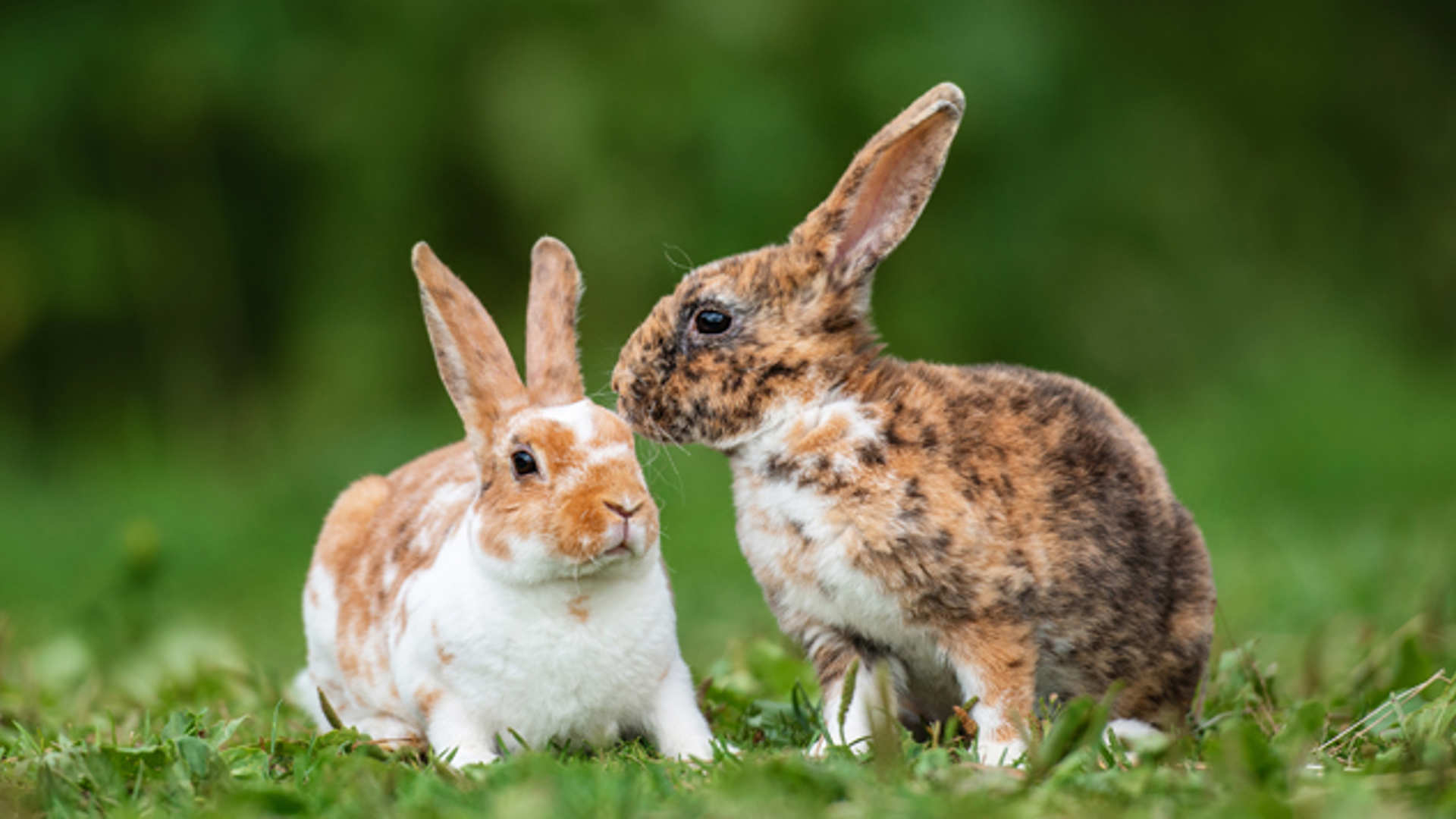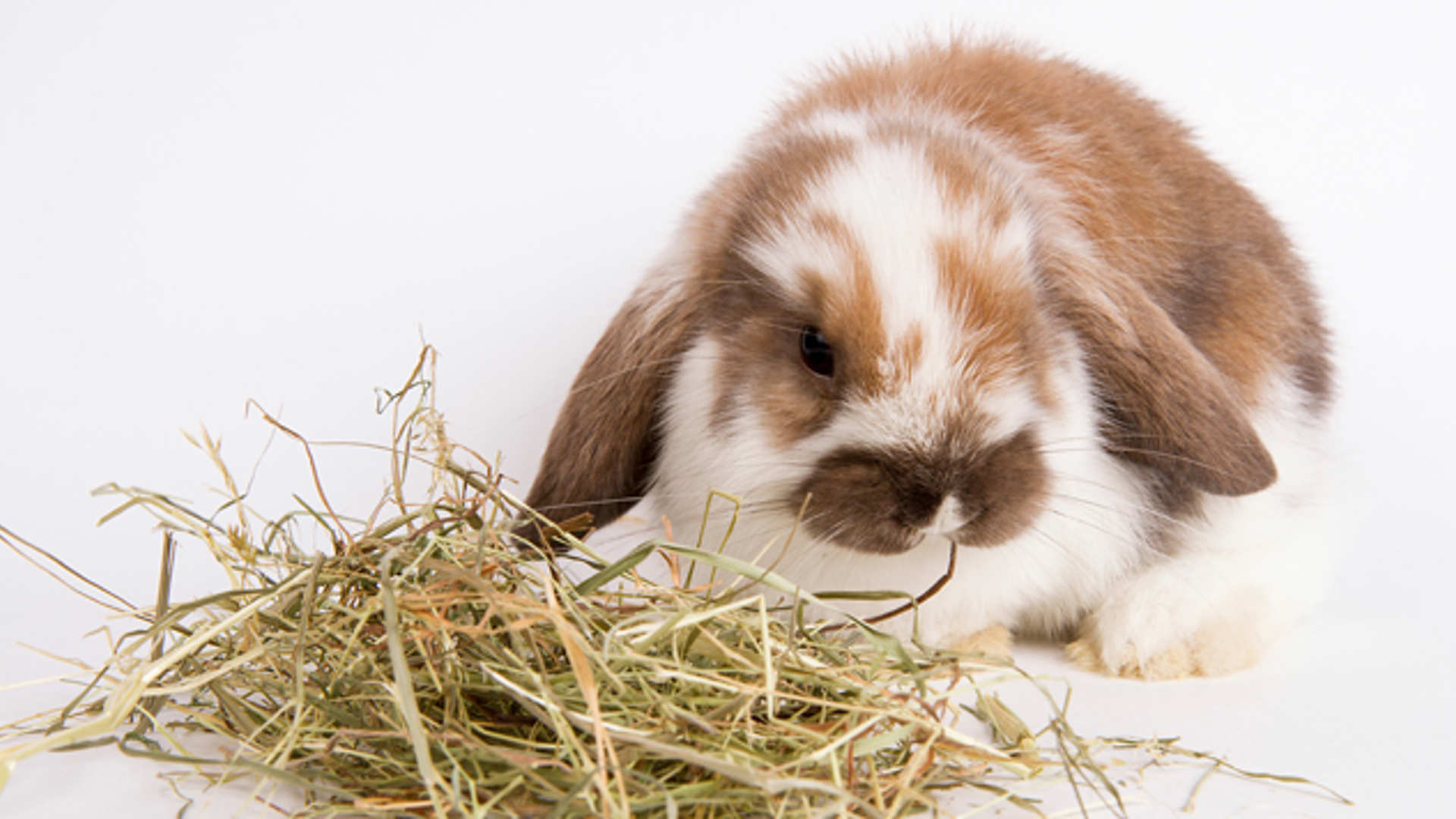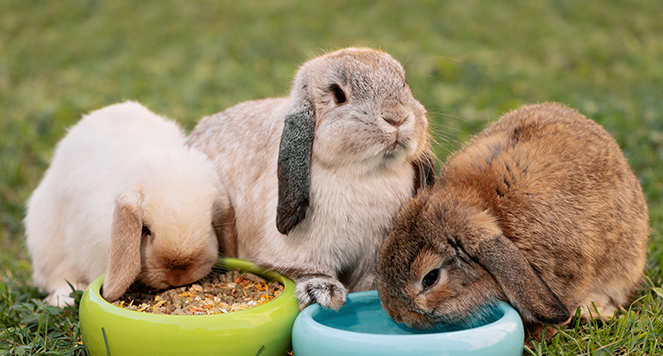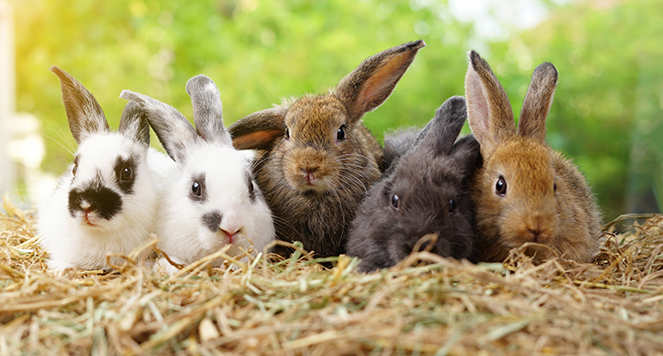
Rabbit Digestion and Nutrition
The majority of rabbits brought to vet practices are presented with common conditions relating to poor or inappropriate nutrition including: obesity, anorexia, dental overgrowth, gastrointestinal disturbance, skeletal abnormalities, bladder stones, hair loss or infertility.
Nutritional balance
The main types of nutrients in foods are carbohydrates, protein, fat, fibre, vitamins and minerals. A balanced diet is when the food supplies all the key elements necessary to meet the daily needs and energy requirements of the animal, without gaining or losing weight.
With a complete diet the nutrients included are in the correct ratio and in a form that is usable for the animal.
A complementary diet is unable to provide all the nutritional needs without supplementation.
For rabbits this is often in the form of hay or vegetables and will require additional supplementation. This also provides them with a source of different fibres. Dietary fibre is a source of indigestible carbohydrates usually associated with plant material.
In most species fibre adds bulk to the faeces and regularises bowel movement. In rabbits and guinea pigs, high fibre levels are required to prevent digestive problems and promote gut motility, as well as serving as an additional energy source.
Fibre promotes dental wear too, as they spend a long time grinding it down before being able to digest it. This helps prevent dental overgrowth or malocclusion. The teeth are open rooted and continuously grow approximately 2mm a week. If the teeth are not constantly worn they become overgrown and misaligned and then uneven wear will occur.
Fibre also promotes gut motility and in turn gut health. In some cases some diseases and disorders, such as stress, can reduce the movement and in severe cases can cause the gut to stop working completely, leading to impaction or possibly even death.
The fibre helps to keep a normal gut movement and provides a balance of gut microflora. Indigestible fibre is passed into the colon and expelled as hard rabbit droppings. Rabbits have the ability to separate digestible from indigestible fibre, which is a unique adaptation of their anatomy linked to their dietary habits.
Managing selective feeding
Species specific foods have been formulated to feed to rabbits to prevent them getting inappropriate diets. They may also require different food based on their life-stage, whether growth, maintenance of a non-breeding adult or during pregnancy and lactation of young.
There are ways to manage selective feeding:
• Avoid pandering to your pet and refilling unfinished bowls.
• Leave the food in the bowl until the animal eats all of their less preferred components.
• Training them when they’re young giving them a wide variety of different feed items is more likely to avoid selective feeding in the future.
• Provide only the right daily amount of food that your pet needs, based on its weight and therefore they should have all they need in one bowl. If they have leftovers then the quantity should be reduced.
• Feed twice daily, splitting the ration, it is more likely that your animal will eat what is offered. This also breaks up the animals day encouraging interaction with you and your pet.
Selective feeding is a natural behaviour for all of us, even for rabbits in the wild it may adversely cause health problems for your pet and its ability to survive.
Stay in the know Related articles & advice
-
Companionship

-
Housing and Enrichment

-
Rabbits



